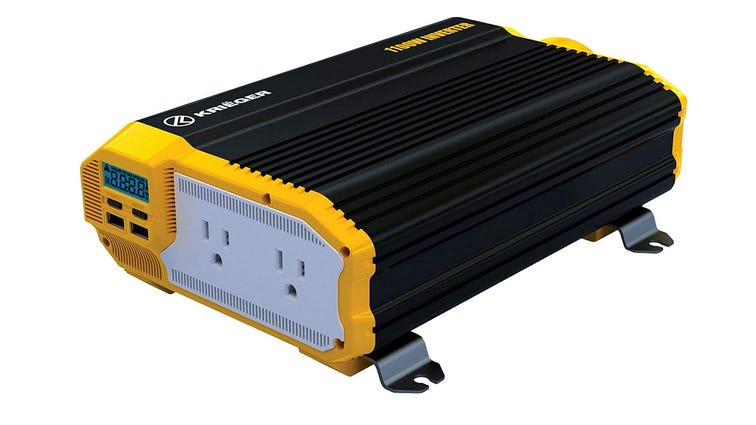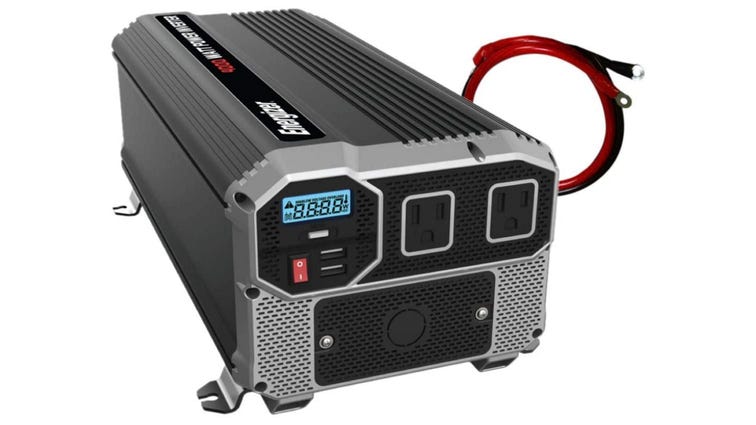Best car power inverter for 2021
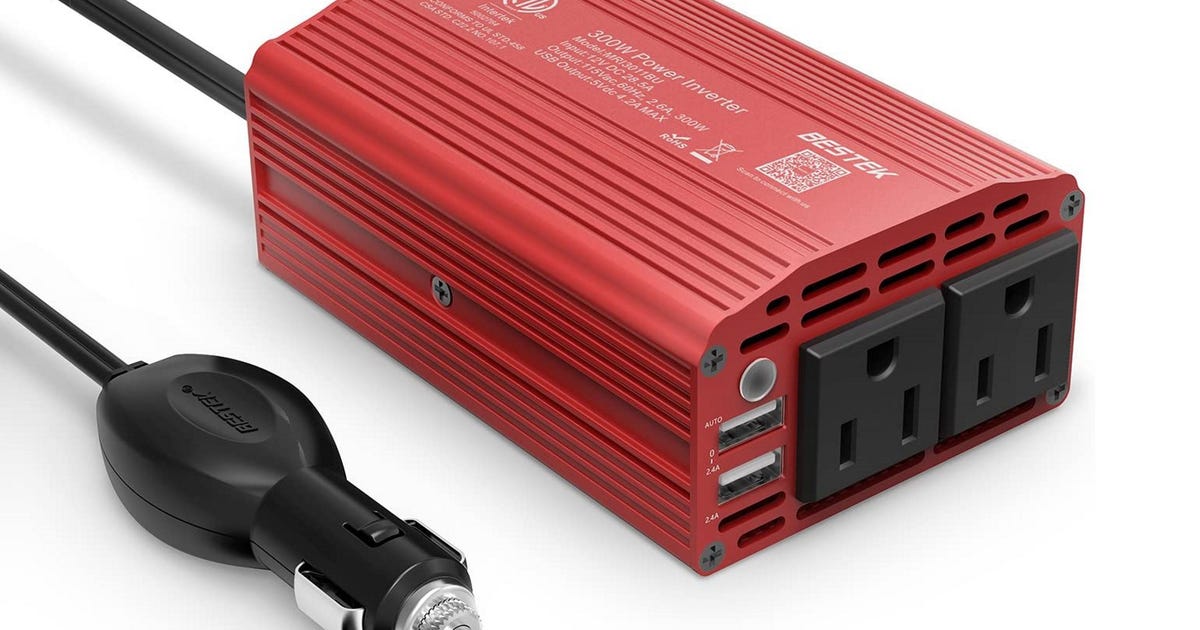
Most modern cars, trucks and SUVs are packing a couple of USB ports, which is fine for charging a phone or two. But for drivers needing to charge larger electronics like laptops, cameras, drones or power tools, a USB port just won’t cut it — for big power on the go, you’ll need an inverter.
In-car power inverters come in various shapes and sizes with a variety of uses beyond just charging gadgets. An inverter can power a game console to keep the kids entertained on a long road trip. In an RV, inverters provide AC power for small home and kitchen appliances like blenders, toaster ovens, microwave ovens and more. A truck outfitted with a powerful enough inverter becomes a mobile work site that powers the tools and tech in remote locations.
Here are some of the best car power inverters on the market now based on user reviews at popular shopping sites and personal experience. Make sure to read on afterwards to find out more about them, what makes them different, how to pick the right one for you
Bestek
Bestek is a brand with a strong reputation that makes it an easy recommendation and, at 300 watts, this is about as powerful an inverter as I’d be comfortable connecting to a car’s accessory power. The unit features two AC outlets and a pair of 2.4-amp USB ports that should make easy work of charging laptops, tablets and other electronics on the go. The aluminum design with an integrated cooling fan is good for keeping the internal electronics cool and strong enough to hold up to abuse, though you will have to find somewhere to mount the bulky box — preferably under a seat, using screws or strong adhesive.
Bestek
The Bestek 75-watt inverter plugs directly into the 12-volt power output point, putting a single AC outlet and dual USB ports right there on your dashboard or center console — though, depending on how recessed your car’s 12-volt power outlet is, you may prefer a corded unit. The compact design makes it easy to toss in a bag and move from car to car and still manages to integrate a cooling fan. At 75 watts of peak power, it’s the least powerful unit on this list of best car power inverters, but unless you have a Pro level laptop, this may be all the wattage you need to charge most small electronics.
SuperOne
The cup-shaped SuperOne car inverter drops into your car’s cup holder, solving the problem of “where to mount your inverter.” After plugging it into a 12-volt cigarette lighter plug, it provides 150 watts to a single AC outlet and dual USB ports. There are even a pair of 12-volt pass-through power points, so you can still plug in other accessories like radar detectors or dash cams. Of course, taking up a cupholder leaves you with less room for tasty beverages, and I’m a bit dubious about the 150W claim (it’s probably closer to 75 or 80W according to some customer estimates), but this car power inverter should work well enough for light loads.
Bestek
Here’s another cup-shaped AC power inverter. The grande-size design makes more room for internal electronics, stepping up to a 200-watt rating split between a pair of AC outlets. There are also dual USB ports and a single 12-volt pass-through point. I’m not a fan of the cooling fan’s position on the bottom of the cup — it could be blocked by certain cup holder designs — but I like that the convenient lid on this car power inverter keeps crud out of the outlets when not in use and how the cup shape makes mounting and removal easy.
Krieger
Having 1,100 watts of peak power at your disposal from a car power inverter should be plenty for running small appliances — such as a vacuum cleaner, a small coffee maker or power tool battery chargers. The Kreiger power inverter features two AC outlets and dual USB ports along with an LCD to monitor power output and performance. Professional installation is recommended for such a powerful unit. With so much current being drawn, you’ll also appreciate the wired remote power switch that can deactivate the unit when not in use, preserving your car battery.
Krieger
The Energizer car power inverter is a big beefcake, boasting up to 4,000 watts of power split between its two AC outlets. There are also a pair of 2.4-amp USB ports for charging smaller devices and an LCD screen to monitor all of that current. There are more powerful units out there, but this should be enough to run a toaster oven or a microwave with plenty of headroom and minimal modification to your RV or truck. That said, it’s bulky and pricey, and professional installation is recommended.
Giandel
For radio, audio or medical equipment or sensitive electronics, a pure sine wave AC inverter can reduce or eliminate interference and noise you get from more common modified wave units. However, high quality current comes at a price, and pure sine wave inverters like this Giandel unit are significantly more expensive, often twice as pricey, watt for watt. But if you’re doing critical work or plugging in delicate or sensitive equipment, it’s worth the cost of admission for a sine wave car power inverter. Giandel also offers a 4,000-watt version of its pure sine wave inverter for around $750.
Comparison of the best car power inverters for 2021
| Product name | Price | Pros | Cons | |
| Best power inverter overall | Bestek 300-watt Power Inverter | $36 | Two AC outlets share 300-watts, enough power for most portable electronics and laptops, strong design with ample cooling | Boxy design, requires a firm mounting point, hardwiring may be required depending on your car |
| Best portable power inverter | Bestek 75-watt Power Inverter | $26 | Plugs straight into the 12-volt port, easy to transport between vehicles, enough power for thin-and-light laptops | May not fit deeply recessed 12-volt ports, only one AC outlet |
| Best compact power inverter | SuperOne 150-watt Car Power Inverter | $28 | Fits into a cupholder, has 12-volt pass-through for connecting other vehicle accessories | May be slightly underpowered, takes up a spot for you may need for beverages |
| Most convenient power inverter | Bestek 200-watt Car Power Inverter | $35 | Fits into a cupholder, dual AC outlets with 200-watts of shared power, has 12-volt pass-through for connecting other vehicle accessories | Design may compromise on cooling and ventilation |
| Best power inverter for power users | Krieger 1,100-watt 12V Power Inverter | $85 | Big power for larger electronics and small appliances, wired remote and LCD screen | Requires hardwired installation, may be a drain on small car batteries |
| Most powerful inverter | Energizer 4,000-watt Power Inverter | $356 | Up to 4,000 watts of AC power should be more than enough power to run multiple small appliances at the same time | Bulky design, requires hardwired connection to battery, professional installation recommended, additional modifications may be required |
| Best pure sine wave for RVs, trucks | Giandel 2,200-watt Pure Sine Wave Power Inverter | $390 | Clean, noise-free pure sine wave AC power for sensitive radio gear or medical equipment | Twice as expensive watt-for-watt as a modified sine wave inverter |
What is a power inverter?
A car power inverter is a device that takes the direct current power that your car’s battery and alternator use and converts it to alternating current required for many home appliances and electronics. Specifically, we’re going from 12-volt DC power to 110-volt AC power, terminating most often in the familiar NEMA 5-15 Type-B grounded outlet like the ones found around your home.
With a car power inverter of the appropriate wattage, you’ll be able to plug in and power devices and appliances designed for use at home or in the office — from laptop and drone chargers to small blenders and coffee makers — for use on the go and off the grid.
What to look for in a car power inverter?
When shopping for an AC inverter, you should first consider what you plan on plugging in. Do you just want to be able to juice your laptop on the way to work or are you looking to run a toaster oven while glamping? This will help you to determine what wattage to aim for and how many power outlets and USB ports the inverter should possess.
Almost every car power inverter on this list also features a USB port or two, handy for charging phones, tablets or small electronics without occupying one of the main AC power ports. Some also have 12-volt pass-through outlets, allowing other automotive accessories, such as dash cams and radar detectors to be plugged in.
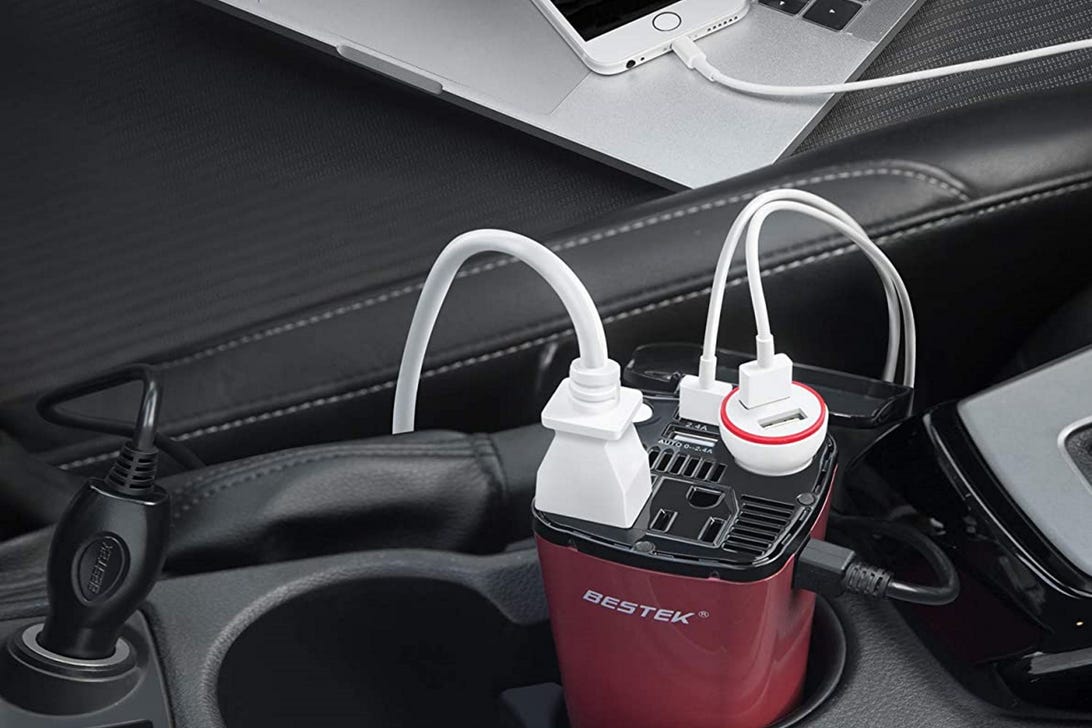
You’ll need to consider your power usage, form factor and the space available in your vehicle when choosing the right power inverter.
Bestek
How much power is enough?
Car power inverters are usually categorized based on the wattage they put out, tending to get more expensive the higher wattage and more AC outlets they offer. A small power inverter usually puts out around 75 to 150 watts, which is usually enough to charge most laptops, low-power game consoles like the Nintendo Switch, camera and drone battery chargers and the like. Stepping up to 300 to 500 watts lets you charge larger, more powerful electronics and usually gets you a second AC outlet, letting you plug in two devices at the same time.
At 1,000 watts, there’s enough juice to run a coffee maker, blender or small microwave oven. The largest inverters covered by this guide top out at around 4,000 watts. They usually offer two to four AC power outlets, which should be enough to run multiple small appliances or even larger ones, like toaster ovens, certain power tools and saws or a powerful gaming PC with multiple monitors. Big power inverters such as these are great for RVs, trucks and trailers that spend a lot of time on the road.
Do you need pure sine wave current?
In addition to how much wattage a power inverter produces, you may also want to pay attention to the quality of the current produced. When viewed through an oscilloscope, alternating current should look like a sine wave alternating smoothly between negative and positive polarity. However, the AC produced by most inexpensive car power inverters is a modified wave that looks more like stair steps back and forth between the two polarities. For sensitive equipment, like radios or medical equipment this stepping wave can cause noise or interference that is undesirable.
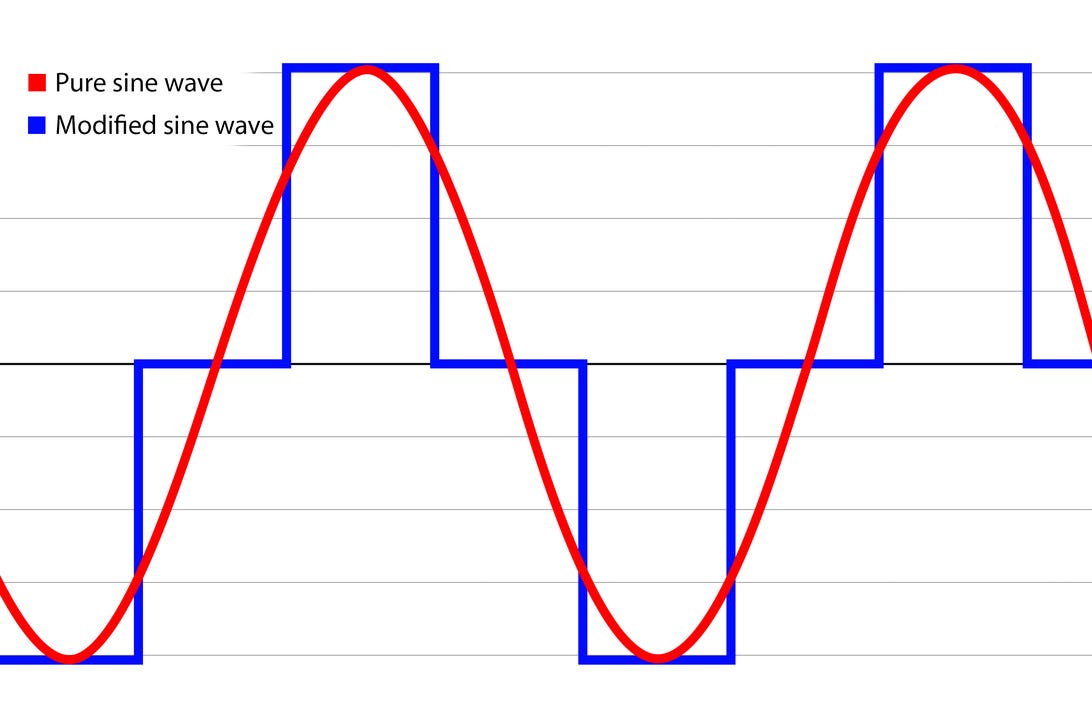
Most “pure sine wave” inverters still don’t produce perfectly smooth AC curves, but are markedly cleaner than modified wave units.
Antuan Goodwin/Roadshow
The solution to this problem is a pure sine wave inverter that uses special circuitry to create that smooth AC wave and eliminate or reduce noise. Pure sine wave inverters are, however, significantly more expensive — often twice as expensive watt-for-watt than a modified wave inverter. So, if you’re only running simple appliances where clean current is necessary or even electronics, like laptops or gaming consoles, that have their own power supply, you can often skip the modified sine wave power inverter. (Ironically, these power bricks and adapters for most electronics usually have internal rectifiers that convert the AC power back to DC that the device can use.)
How do you install a car power inverter?
More wattage also somewhat complicates installation. Below 150 watts, you can usually just plug the inverter into your car’s 12-volt outlet — what we used to call the cigarette lighter plug. But most cars aren’t rated for high wattage accessory power, so a 4,000-watt inverter would just blow the fuse. So, power inverters above 300 watts usually require a direct connection to the vehicle’s battery and their own fuse. That can be as simple as simple alligator-type clips that connect to the battery clamp terminals, but a hardwired connection is safest and best. That means having an experienced installer handle installation if you’re not comfortable doing so yourself.
Very high wattage power inverters or applications where extended use may be required, further modification may also be required. For example, adding a larger battery, beefier wiring or perhaps even a second battery for overnight use in an RV or overlanding truck. Remember, an inverter doesn’t create power, it just converts it from your car’s reserves. Powering your gadgets is good, but you’ll want to make sure there’s enough amperage left in the car battery to crank up when you’re done. Again, an experienced installer will be able to help with your specific needs.





